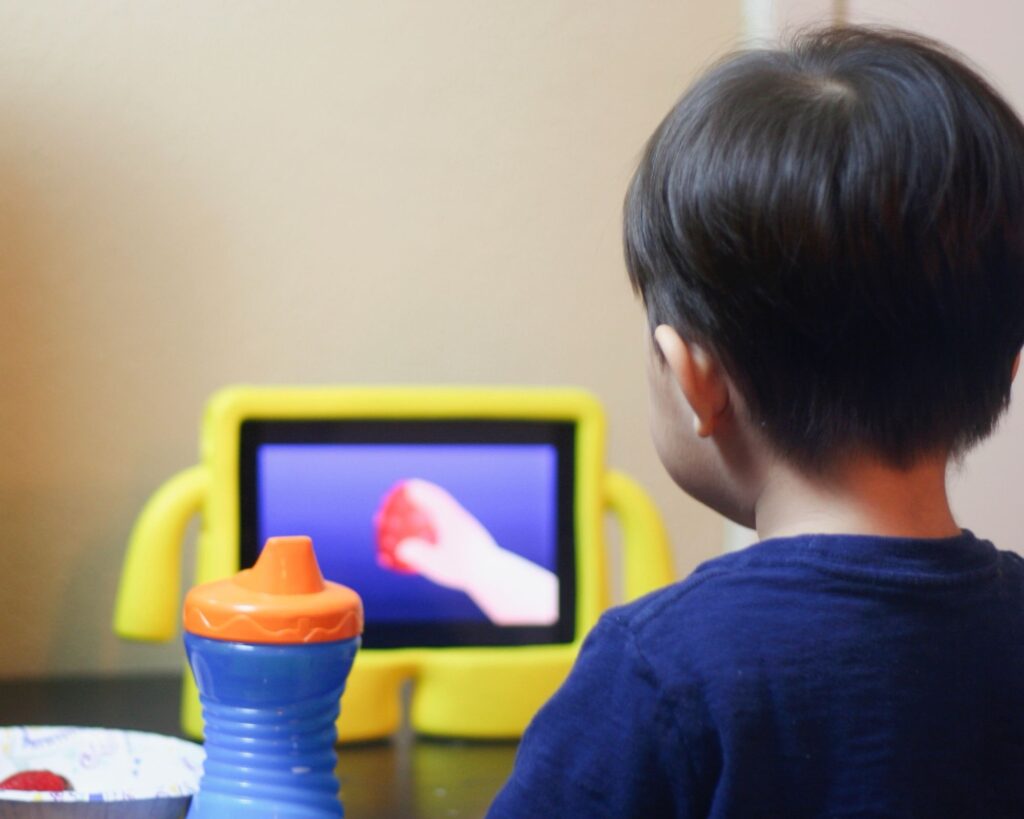The Parenthood Journey
Welcome to the wild, wonderful, and sometimes perplexing world of parenting! If you’ve ever found yourself second-guessing a decision, wondering if you’re too strict or too lenient, or just plain baffled by the latest parenting dilemma, know that you’re in good company. Parenthood is a journey unlike any other, filled with highs and lows, triumphs and challenges. It’s a path that teaches us as much about ourselves as it does about the little humans we’re raising.

One of the most comforting things to remember is that there’s no such thing as a perfect parent. Just like our kids, we’re constantly growing, learning, and doing our best. And while the challenges can sometimes feel daunting, they also offer incredible opportunities for growth—for both us and our children.
In this article, we’re diving deep into the top three challenges parents commonly face: establishing effective discipline, managing screen time, and fostering independence. These topics surface time and again in parenting forums, pediatricians’ offices, and casual conversations at the playground. They touch on the core aspects of raising healthy, happy, well-adjusted children in today’s ever-changing world.
But fear not! For every challenge, there are multiple strategies to tackle it head-on. Whether you’re a new parent feeling overwhelmed by the sheer responsibility of it all, or a seasoned pro navigating the turbulent waters of adolescence, this guide is here to offer practical advice, support, and perhaps most importantly, reassurance that you’ve got this.
So, let’s embark on this journey together, armed with the knowledge that while the road may be bumpy, the rewards of parenting are immeasurable. As we explore these common challenges and how to address them, remember: the goal isn’t to be perfect, but to be present, responsive, and loving. That’s what truly makes the difference in the lifelong adventure of parenting.

Challenge #1: Establishing Effective Discipline
One of the most talked-about challenges in the parenting world is discipline. How do we set boundaries for our children that teach them right from wrong, respect for others, and self-control, all while maintaining a loving relationship? It’s a delicate balance, requiring consistency, patience, and a whole lot of empathy.
Strategies for Addressing Effective Discipline
- Consistent Rules and Consequences: Children thrive on predictability. Establishing clear rules and consistent consequences helps them understand what’s expected of them and the natural outcomes of their actions.
- Positive Reinforcement: Catch your child being good! Positive reinforcement for desired behaviors is more effective than punishment for unwanted behaviors. It builds their self-esteem and encourages more of the behavior you want to see.
- Setting a Good Example: Kids are keen observers and often mimic adult behavior. By modeling respect, patience, and self-control, you’re teaching them valuable lessons in how to treat others and themselves.
- Open Communication: Creating an environment where feelings and thoughts can be expressed openly and without judgment encourages children to speak up about their challenges and understand the reasoning behind certain rules and consequences.
Tips for Avoiding Common Pitfalls
- Avoid Negative Labels: Instead of labeling a child as “naughty” or “bad,” focus on the behavior. This helps children understand that while their behavior might not be acceptable, they are still loved and valued.
- Emphasize Learning from Mistakes: Discipline should be a learning opportunity, not just a punishment. Encouraging children to reflect on their actions and what they might do differently next time fosters growth and understanding.
In the journey of establishing effective discipline, it’s also crucial to recognize the role of engaging, educational activities in promoting positive behavior. For instance, incorporating learning games can be a subtle yet powerful way to encourage focus, patience, and cooperation. A great resource is “Learn Numbers 1-10 with Fun Visuals and Catchy Songs” (lifewithkidsblog.com), which not only aids in numerical learning but also in developing listening skills and the ability to follow directions through enjoyable songs and visuals. This approach underscores the importance of blending discipline with positive, educational play, showing that learning boundaries and respect can be a fun and integrated part of a child’s daily activities.
By tackling discipline with these strategies, parents can create a home environment where rules are understood and respected, and where children feel secure, loved, and prepared to navigate the complexities of the world around them.

Challenge #2: Managing Screen Time
In today’s digital age, screen time is a hot-button issue for many parents. How do we balance the benefits of educational content and the convenience of digital babysitters with the need for physical activity, creative play, and interpersonal interaction? Finding the right equilibrium is key to fostering healthy development.
Strategies for Addressing Screen Time
- Creating a Family Media Plan: Sit down as a family and decide on screen time limits that make sense for your lifestyle and values. Include not just restrictions, but also what types of media are appropriate.
- Encouraging Screen-Free Playtimes: Designate certain times of the day or specific areas of the home as screen-free zones. Encourage activities that don’t involve screens, like reading, playing outside, or family board games.
- Being Involved in Children’s Digital World: Understand what your children are watching and playing. Engage with them about their favorite programs and games, and explore these digital worlds together.
- Setting Limits and Offering Alternatives: Rather than simply restricting screen time, provide fun and engaging alternatives. This not only limits screen exposure but also enriches your child’s day with a variety of activities.
Tips for Avoiding Common Pitfalls
- Not Using Screens as a Default Activity: It’s easy to fall into the habit of turning to screens whenever there’s downtime. Instead, encourage your child to think of other activities they enjoy, or suggest new ones they could try.
- Encouraging Media Literacy: Teach your children to critically evaluate the media they consume. This skill is invaluable in navigating the vast array of content available online.
In the quest to manage screen time effectively, introducing culinary activities can be a delightful and engaging way to entice children away from screens. Cooking together not only provides a fantastic alternative to screen-based entertainment but also teaches valuable life skills, fosters family bonding, and encourages creativity. A perfect example of such an activity is preparing “Easy and Irresistible Walking Banana Pudding Desserts for Kids” (lifewithkidsblog.com). This fun, hands-on recipe is simple enough for children to help with and delicious enough to capture their full attention. Through activities like this, children learn the joy of creating something with their own hands—something no screen can provide.
By thoughtfully managing screen time and incorporating enriching, interactive activities like cooking together, parents can ensure that their children enjoy the benefits of technology while also developing a broad range of interests and skills beyond the digital realm.

Challenge #3: Fostering Independence
A pivotal aspect of parenting is guiding children towards independence, equipping them with the confidence and skills they need to navigate the world on their own. This journey involves teaching them to take on responsibilities, make decisions, and solve problems independently. However, fostering independence while ensuring safety and appropriate guidance can sometimes feel like walking a tightrope.
Strategies for Addressing Independence
- Providing Age-Appropriate Responsibilities: Start small with tasks like picking out clothes, setting the table, or feeding a pet. These responsibilities grow with the child, instilling a sense of capability and accomplishment.
- Encouraging Problem-Solving Skills: Resist the urge to immediately solve every problem for your child. Instead, encourage them to think through issues and come up with potential solutions, offering guidance as needed.
- Allowing Natural Consequences: Within safe limits, allowing children to experience the natural consequences of their actions teaches them cause and effect and helps them learn from their mistakes.
- Supporting Efforts and Acknowledging Achievements: Celebrate the process, not just the outcome. Acknowledging effort and improvement in tasks fosters resilience and a growth mindset.
Tips for Avoiding Common Pitfalls
- Avoiding Micromanaging: It’s important to provide guidance and oversight without overstepping. Allowing children the freedom to explore and learn on their own terms is key to developing independence.
- Balancing Safety with Independence: While it’s crucial to ensure children are safe, overly restrictive rules can hinder their ability to learn and grow. Finding a balance that allows for exploration within safe boundaries is essential.
In navigating the path to independence, understanding the emotional landscape of children is crucial. Sometimes, resistance to seemingly simple tasks can stem from underlying emotions or unmet needs. For instance, a child’s anger or refusal to engage in a particular activity might signal frustration, a desire for autonomy, or an unaddressed issue. “Understanding Children’s Anger: Exploring Reasons Behind Resistance to Simple Tasks” (lifewithkidsblog.com) delves into this topic, offering insights into the emotional underpinnings of children’s behaviors. By comprehending these emotional triggers, parents can more effectively support their children’s journey towards independence, addressing not just the behavioral aspects but the emotional ones as well.
Fostering independence is a multifaceted challenge that requires patience, understanding, and a tailored approach that considers the unique personality and needs of each child. By employing the strategies outlined above and understanding the emotional dynamics at play, parents can guide their children towards becoming confident, self-reliant individuals.
In fostering independence, another significant milestone often approached with a mix of anticipation and anxiety by many parents is determining when their child is ready to stay home alone. This decision is not just a rite of passage for the child but also a testament to the trust and responsibility cultivated over years of parenting. It’s a moment that brings to the forefront questions about maturity, safety, and preparedness.
Balancing Freedom with Safety: Deciding the right age for a child to stay home alone is a nuanced decision that varies from family to family and child to child. Factors such as the child’s comfort level, maturity, and the length of time they will be alone play critical roles in this decision-making process. It’s about balancing the desire to promote independence with the imperative to ensure safety.
Preparing Your Child: Preparation is key. Discussing expectations, setting ground rules, and having practice runs can help ease the transition for both the child and the parent. It’s also important to have open lines of communication, ensuring that the child feels supported and knows how to reach out for help if needed.
Legal Considerations and Guidelines: It’s also crucial to be aware of any legal guidelines or age requirements for leaving children home alone in your area. These laws can offer a framework for making informed decisions about when and under what circumstances a child is ready for this step.
For parents navigating this significant decision, the article “Home Alone: The Right Age for Kids to Stay by Themselves” provides valuable insights and considerations. It’s a resource designed to help parents assess their child’s readiness for staying home alone, offering practical tips for preparing both the child and the home for this new level of independence. By thoughtfully approaching this milestone, parents can support their children in growing into responsible, confident individuals ready to take on new challenges.
Fostering independence in children is a complex, dynamic process that evolves with each new stage of development. By addressing the emotional and practical aspects of independence, such as understanding resistance to tasks and preparing for self-sufficiency at home, parents can guide their children towards maturity with confidence and care. Each step, whether it’s taking on household responsibilities or staying home alone, is a building block in the foundation of a child’s independence, contributing to their growth into capable, resilient adults.

Embracing the Learning Curve
Parenting is an ever-evolving journey that presents new challenges and milestones at every turn. As we’ve explored the top three parenting challenges—effective discipline, managing screen time, and fostering independence—we’ve seen that each comes with its own set of strategies, considerations, and opportunities for growth. It’s through navigating these challenges that we not only guide our children but also learn and grow alongside them.
In the quest to establish effective discipline, we learned the importance of consistency, positive reinforcement, and open communication. Resources like “Learn Numbers 1-10 with Fun Visuals and Catchy Songs” remind us that discipline can also be a joyful learning opportunity, incorporating educational content into everyday moments.
Managing screen time effectively requires setting clear guidelines and offering enriching alternatives. Engaging in activities like making “Easy and Irresistible Walking Banana Pudding Desserts for Kids” can provide a delicious distraction and a way to connect beyond the digital world.
Fostering independence is a delicate balance of providing guidance while allowing children to explore and learn from their own experiences. Understanding the underlying emotions behind behaviors, as discussed in “Understanding Children’s Anger: Exploring Reasons Behind Resistance to Simple Tasks”, is crucial in this process. Additionally, determining the right moment for a child to stay home alone, guided by insights from “Home Alone: The Right Age for Kids to Stay by Themselves”, marks a significant step in nurturing self-reliance and confidence.
Questions and Answers for Parents
How can I make discipline more about learning and less about punishment?
Focus on teaching rather than punishing. Use mistakes as learning opportunities, and involve your child in finding solutions. Resources that incorporate learning into daily routines, like educational songs or games, can also make the process more engaging and meaningful.
What are some effective ways to limit screen time without causing conflict?
Set clear, consistent limits and involve your child in creating a family media plan. Offer fun, hands-on activities as alternatives to screen time. Cooking projects or crafts can be excellent ways to engage your child’s interest and creativity off-screen.
How can I support my child’s independence while ensuring they’re safe?
Start with small, age-appropriate responsibilities and gradually increase them as your child shows readiness. Open discussions about feelings and behaviors can help you understand and support your child’s path to independence. Preparing them for staying home alone with clear guidelines and safety measures is also key.
My child gets frustrated easily with tasks. How can I help them cope?
Understanding the root of your child’s frustration is crucial. Encourage open communication about their feelings, and guide them in problem-solving and managing emotions. Recognizing and addressing the emotional aspects behind challenges can foster resilience and perseverance.
As we wrap up this exploration of parenting’s top challenges, remember that every family’s journey is unique. The strategies and resources shared here are meant to support and inspire you on your path. Embrace the learning curve, celebrate the milestones, and remember that in the world of parenting, progress, not perfection, is what truly matters.
As an Amazon Associate we earn from qualifying purchases through some links in our articles.



